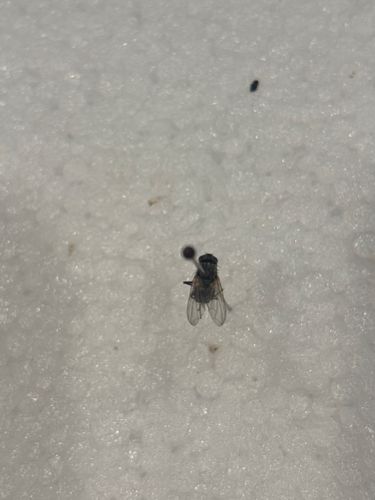Fruit Fly
Scientific Name: Drosophila melanogaster (likely)
Order & Family: Diptera, Drosophilidae
Size: 2-4 mm (adults)

Natural Habitat
Commonly found near ripe, fermenting, or decaying fruits and vegetables, and in kitchens or areas where food is exposed.
Diet & Feeding
Primarily feed on fermenting fruits, vegetables, and other organic matter. Larvae feed on the yeast and bacteria present in these decaying substances.
Behavior Patterns
Attracted to fermenting substances. Females lay eggs on ripening or decaying fruit. They exhibit rapid reproduction and short life cycles, often completing a generation in as little as 8-10 days. Males perform elaborate courtship rituals.
Risks & Benefits
Potential risks include being a nuisance pest in homes and commercial settings, and they can contaminate food. They are not known to bite or transmit serious diseases to humans in the same way mosquitoes or ticks do. Benefits include their significant role in scientific research, particularly in genetics and developmental biology, due to their ease of breeding and short life cycle.
Identified on: 9/19/2025